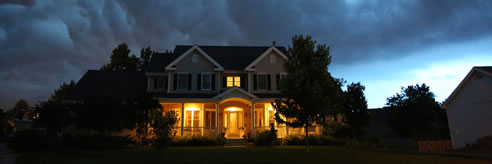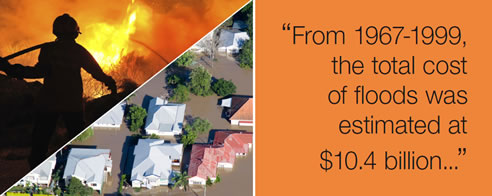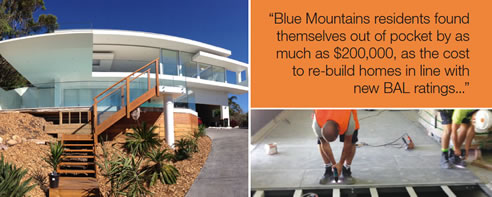NEWS ARTICLE ARCHIVESMoisture Resistant Fire Grade Plasterboard from UBIQ
New House Rules
Introduction As a result, the building and design industry are under pressure from building and home owners to create homes using materials that are capable of withstanding Australia's changing climate, whilst remaining energy and cost efficient. Additionally, the long-term consumer demand for higher levels of sound resistance and tightening Building Regulations has created a demand for improved acoustic performance. Traditional materials used for wall cladding and flooring, such as timber, concrete and plasterboard, provide solutions for some of these problems but none provide solutions to all.
Floods, Fires and Failure The impact building materials have on the environment, from manufacture to disposal, is a concern for all, especially governments and consumers. Plasterboard is damaging to the environment and can therefore be difficult for the building owner to dispose of. 4 Further down the line, this raises questions of whether the cost effectiveness of the product is worth the cost of disposal and the damage it causes to the environment. By comparison, wall and floor materials such as timber, pose less risk to the environment but can be expensive, difficult to source and can increase construction time considerably. Timber strip flooring does not fare overly well in moist environments and can result in cupping or rotting of the floor boards.5 Additionally, in order to meet the highest Bush Fire Rating Level (BAL-FZ), timber systems used for external cladding must also incorporate moisture resistant fire-grade plasterboard.6 Another cause for concern in the building industry is increased population. As metropolitan areas continue to be built up to squeeze in residents, noise complaints and disputes between neighbours have increased as a result. To tackle this problem, heavy, cumbersome and expensive concrete panels can be used, but they take much longer to install and can incur a significant cost increase.
When Disaster Strikes In the case of fires, either externally or internally, materials used in lining ceilings and walls can have a major effect on the spread of fire and on its intensity within buildings. It is therefore crucial to select construction materials with this in mind, especially in light of recent bush fire tragedies. In events as recent as 2013, where NSW homes were destroyed in bush fires, many Blue Mountains residents found themselves out of pocket by as much as $200,000, as the cost to re-build homes in line with new BAL ratings for the area, were much higher than the payout they were given on their underinsured home. 8 Insurance pay-outs or lack of, have become a major driving force behind consumers pushing for high performing building materials at an affordable price.
The Solution The INEX>BOARDS range of floor, wall and weatherboard products offer an innovative all-in-one solution to these unresolved issues. INEX boards are 100 per cent recyclable, lightweight and high-strength, making them easy on the environment and simple to install. Most importantly, INEX>FLOOR, INEX>RENDERBOARD and INEX>WEATHERBOARD products are water, mould and termite resistant, as well as BAL FZ approved - the highest bushfire attack rating. Aesthetically, INEX Boards exhibit a solid 'masonry feel' that can be used as a final finish, with a demonstrated acoustic attenuation of Rw +7, higher than that of standard plasterboard. UBIQ's INEX boards are an essential solution based building material for all applications where value, performance and sustainability are sought.
|
 |
 |

